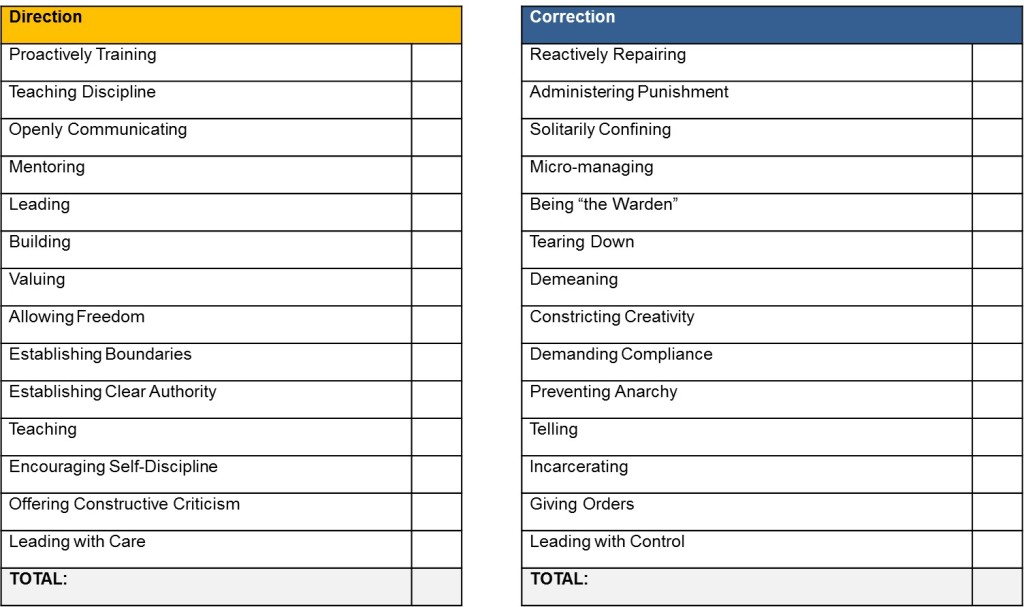
In this country, we often call prisons “correctional facilities”. Though the term “correctional” is debatable depending on the institution, there is a good reason they are called correctional facilities. It is because, within those walls, there are people who have gotten off course, who have lost their sense of direction. These are people who need to correct course.
There is an important lesson in this for us as leaders.
When it comes to leading others, there are two approaches: direction or correction. Granted, every leader must do both at the appropriate times; but the fact is, the more direction you provide, the less correction is required.
So here’s the tough question: Are you running a company or a correctional facility?
Take a look around. Are your employees actively engaged in their work? Are they excited to be there? Are you aware of their strengths and offering them opportunities for learning and advancement based on those strengths? Are they growing in their work? Do they feel valued? Are you invested in their success? Are they invested in your success, and in the success of the company? These are signs of a Direction-based company.
Conversely, is your team disengaged and nonchalant? Do they show up late and call off frequently? Do they spend more time finding ways to “escape” – surfing the net, complaining on social media, chatting in huddled circles – than they do in productive activity? Are they just there for a paycheck – serving time – and nothing else? These are the signs of a Correctional-based company, where people are off course and in need of direction.
Take the Direction – Correction Assessment below to determine your balance.
Put a “1” beside the characteristic which best describes you in each row.

It has been said that “everything rises and falls on leadership”. If you as a leader are doing more correcting than directing, the good news is that you as a leader are capable of changing that equation. You do this by intentionally focusing on the practices and principles in the first column. The more you focus on direction, the less you will have to focus on correction.
There will be some who do not respond to direction, no matter how much you try. At some defined point, you must correct. And if correction doesn’t work, for the sake of the team, you may need to make the hard decision to let the person go.
Will you be a leader to take the responsibility of directing…to care enough to make a difference?
Deb Ingino is an expert in the realm of team development training and a strong advocate of proactive, directional leadership. If your company is in need of outside expertise in this area, contact Deb today. Her proven record of expertise with companies in America and abroad prove that, with the proper direction, you can achieve amazing results for yourself, your team, and your entire organization.
+ view comments . . .